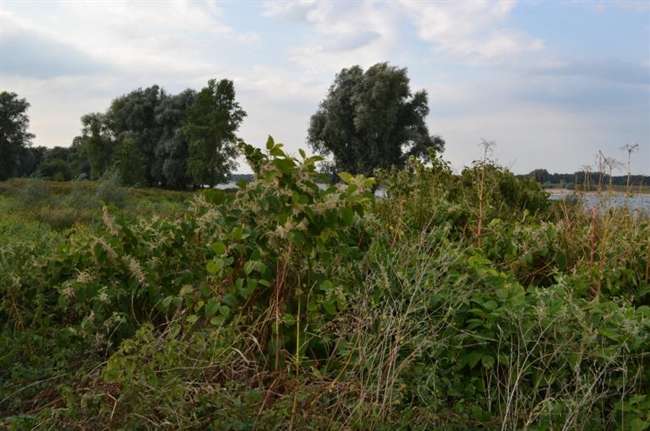River areas overrun by invasive plants

Rivers are high-speed corridors for the spread of invasive exotic plants. Increasingly, these plants are pushing out native species and making floods more likely. A study conducted by Deltares, Utrecht University, Radboud University and the German Institute for Flood Plain Ecology has shown that exotic varieties like the Japanese knotweed and the Himalayan balsam grow faster and form denser vegetation in European flood plains than the native vegetation. The phenomenon is also seen Dutch river areas.
Particularly where a river deposits new sand, exotic species spread like a plague. The dense plant growth slows down the flow of the river and increases the flood risk in the summer and autumn.
River development calculated for a centry and a half
Mijke van Oorschot (Utrecht University/Deltares) and fellow-researchers from Radboud Unviersity (amongst others) combined an existing computer model for water flows and the deposition of sand with a new model for the spread, growth and death of plants. In this case, willows, poplars and the Japanese knotweed. 'Model results showed that, in the worst case, the invasive species became dominant within a few years and that water levels rose by about 35%. The patterns were similar for rivers in Northwest Europe,' explains Mijke. See this movie for the computer animation.
Higher flood risk due to Japanese Knotweed
The Japanese knotweed was brought to the Netherlands as a ornamental plant more than a century ago, and it is now causing many problems due to its massive spread. The model results show that this plant is pushing out native riverbank plants. It grows more densely, holding back the water more than typical Dutch riverbank plants such as willows and poplars. That slows down the river and pushes up water levels, resulting in a higher risk of flooding in the summer and autumn, when the Japanese knotweed is largest.
In Japan, the Japanese knotweed encounters more competition from the local plant species, and the plant is actually considered to be valuable there. In particular, the young shoots are eaten as a snack and the roots are used for medicinal purposes. In the Netherlands, the plant is not protected and there are countless recipes for salads, muffins, cakes and purees. People who pick the plant in the wild can also help to spread it. 'Make sure you don't drop any pieces of plant on the way, and don't throw any remnants of the plant into your garden waste or on your compost heap, because bits of stems and roots can grow into new plants. That is one factor that explains why it spreads so rapidly,' explains Mijke.
Provided by Radboud University


















